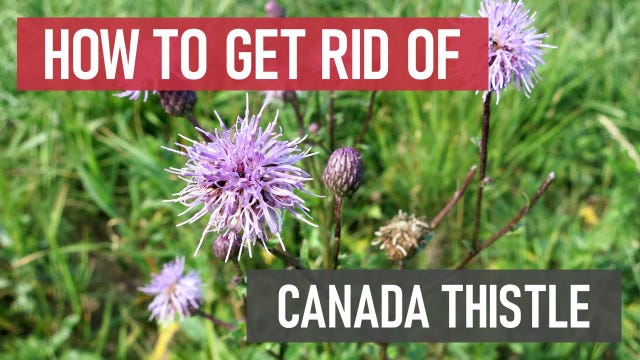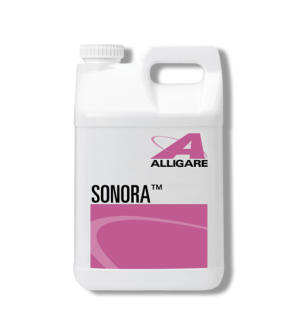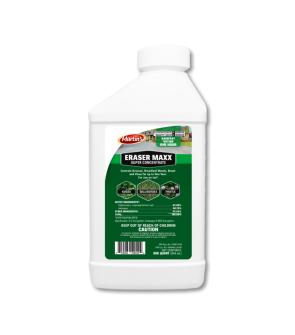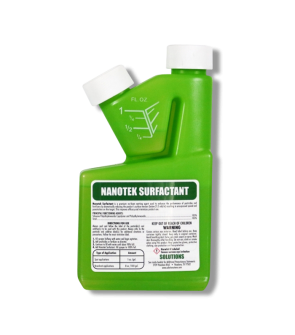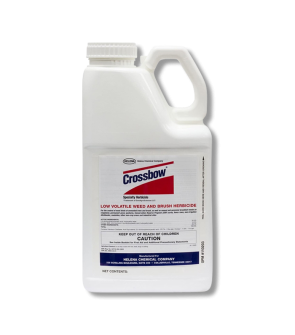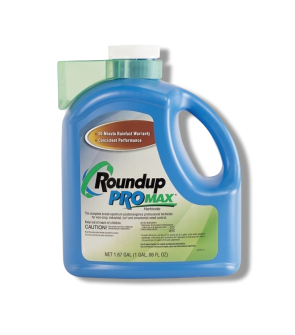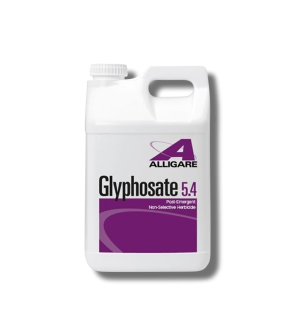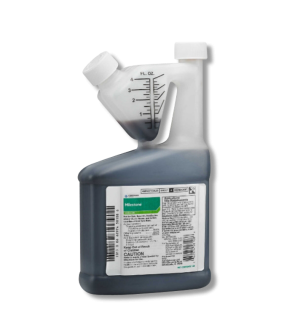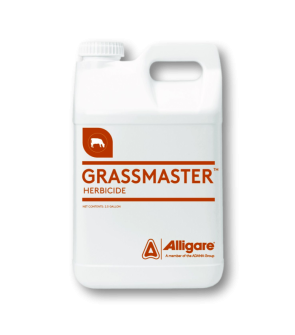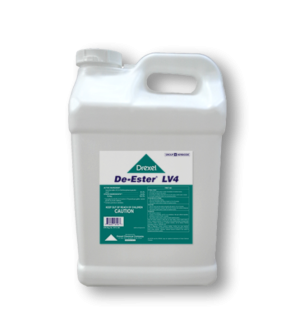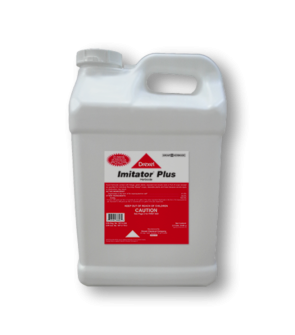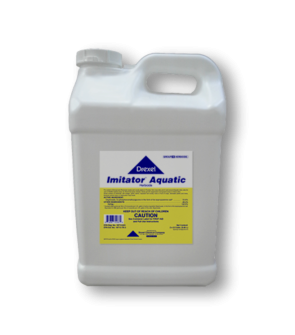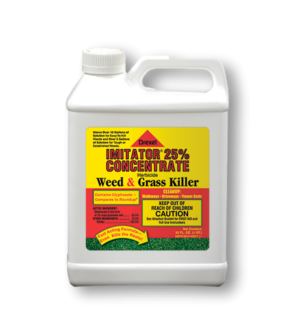Gain access to personalized product screening, the best pricing, rewards, and more!
Most Effective Products
Canada Thistle Control: How to Get Rid of Canada Thistle
Canada thistle is a common invasive plant found in a wide range of areas, especially in the upper midwest of the United States, like Indiana and Wisconsin. It is a creeping perennial that often grows in large patches where established. Although it is typically seen in a wide range of areas, it tends to thrive more where it is wet.
This broadleaf weed isn't just a problem on home lawns; it is also a huge issue for farmers and growers in the agricultural industry, especially in Canada, as its name implies. Canada Thistle can cause greater crop losses than any other perennial broadleaf weed in various regions and continues spreading. It's the number one perennial broadleaf weed farmers target.
If you are having a problem with Canada thistle, we can help. Our lawn care experts developed our DIY Canada thistle control guide to show you exactly what you need to kill Canada thistle and eradicate it from your yard quickly and affordably.
Identification
Before you can carry out a treatment plan, you need to be aware of what Canada thistle looks like and to confirm whether or not it is the weed you are dealing with. Misidentification can lead to using the wrong treatment methods, which can waste your time and money. It's important to differentiate Canada thistles from many of the biennial thistles that can grow since the methods of treating them are quite different.

- Canada thistle is a perennial weed that can grow up to 5 feet tall and branch out horizontally on the top portion of its slender, grooved, and erect stems. Each weed has a fibrous taproot that is up to six feet deep. This extensive root system makes the Canada thistle especially difficult to control.
- The leaves are lance-shaped and have prickly, wavy margins that attach directly to the stem. Depending on the stage of growth and species, they may have no lobes or irregular deep lobes.
- When maturing, Canada thistle produces small, light, fluffy seeds that can blow off and disperse, similar to dandelion seeds. However, much of the seed tends to drop right where the parent plant is.
- Between June and August, this weed will begin to display clusters of rounded, umbrella-shaped flowers at the tops of branches. These flowers vary in color from purple to pale pink. Canada Thistle flowers are also unique because they have both male and female flowers, which are very small compared to other thistles. The gender of the flower will determine its fragrance, size, and shape. Male Canada thistles will be smaller, less fragrant, and more globe-shaped than female flowers.
Use the above description and image to help you properly identify Canada thistle. If you are having trouble, you can always contact us. Our lawn care experts will help you correctly ID your weed growth and suggest treatment options.
Inspection
Once the Canada thistle has been properly identified, you can proceed to inspection. During this program phase, you must locate where the Canada thistle is growing and what conditions allow it to thrive. This will help you determine where to focus your herbicide application.

Where to Inspect
Canada thistle grows well in disturbed soil with regular aeration and full or partial sunlight access. Common sites include, but are not limited to, pastures, fields, croplands, fallow land, forest openings, and roadsides.
What to Look For
Once established, Canada thistle will begin to form dense and erect patches or clumps between June and August. This weed will appear as a rosette during the early spring and fall.
Treatment
Before using any herbicide product, ensure you have the proper personal protective equipment (PPE) for safety when mixing and applying.
We recommend using a selective post-emergent herbicide containing one of the active ingredients, such 2,4-D, to kill Canada thistle. A herbicide containing systemic activity will help target the Canada thistle down to its roots and leave desired plants unharmed. If your selected herbicide allows it, using a surfactant with your applications will result in better elimination.
If Canada thistle grows in warm-season lawns or non-lawn areas, you may have to use a non-selective herbicide containing an active ingredient like glyphosate. Non-selective herbicides kill any plant they are applied to, including grass.
No matter which herbicide is used, consistent applications are necessary to fully control Canada thistle. These perennial weeds can create new infestations from plant cuttings, dislodged roots, or leftover root material beneath the soil. Be sure to follow all reapplication rates and restrictions on the product label.
Step 1: Measure and Mix 2,4-D Amine

2,4-D Amine Selective Post-Emergent Herbicide is a selective herbicide that kills broadleaf weeds and brush without harming cool-seasoned grasses when used according to the label instructions.
Nanotek Surfactant is a non-herbicide that helps the herbicide stick better to the weed and work more effectively.
Determine how much 2,4-D Amine Selective Post-Emergent Herbicide to use by measuring the square footage of the treatment area. To do this, measure the length and width of the treatment area in feet, then multiply them together (length X width = square footage). For acreage, take the square footage of the treatment area and divide it by one acre (square footage / 43,560 sq. ft. = acres).
When using 2,4-D Amine to control weeds in ornamental turf, the labeled application rate for this product is 3.16 pints of concentrate per 1 acre. For smaller applications, this breaks down to 1.1 fluid ounces of concentrate applied over 1,000 square feet.
In pastures and rangelands, mix 1 to 4 pints of concentrate in 1 to 30 gallons of water per acre. For smaller areas, you can mix 3/4 to 1 fluid ounce of concentrate with 1 gallon of water to apply over 1,000 square feet.
In fallow lands, mix 4 pints of concentrate into 10 gallons of water.
Add 1 fl. oz. of Nanotek Surfactant with every 1 gallon of 2,4-D Amine Selective Post-Emergent Herbicide.
Once you have made your measurements and calculated how much product you need, mix the product and surfactant with the appropriate amount of water in a handheld or backpack sprayer. Shake the sprayer to ensure the solution is well-mixed, and then you're ready to spray
Step 2: Apply 2,4-D Amine To The Canada Thistle
Applications are most effective when the plant is budding before seed production. If the plants are close to producing seeds, you may need to mow the plant to prevent the weed from spreading.
The taproot will survive and grow a new plant over the next year, providing another opportunity to apply chemical control. Remember that mechanical removal alone is not recommended, as it is easy to leave even a small part of the taproot in the ground when pulling weeds. As long as a portion of the taproot remains alive, weeds like Canada thistle will continue to grow and take resources away from your other plants.
Adjust your sprayer to a fan nozzle setting for an even coating of 2,4-D Amine Selective Herbicide mixture on the top and bottom of Canada thistle leaves. Spray the weed to the point of wetness but just before the point of runoff.
Avoid applications when temperatures are above 90 degrees Fahrenheit. Because Canada thistle is so prolific, you may need to make repeated applications until you no longer see any more Canada Thistle.
Do not make more than 2 applications per year on ornamental turf, pastures, rangelands, and fallow lands.
Do not disturb treated fallow land areas for at least 2 weeks after treatment or until weed tops are dead.
Prevention
Once Canada thistle has been removed from your property, be sure it does not make a return. Some preventative measures you can take to prevent Canada thistle are explained below:
- Limit ground disturbance from vehicles, machinery, and grazing livestock since Canada thistle grows well in sites with consistent aeration and well-drained soils. Rotating livestock between fields for each season is best to limit possible soil disturbances.
- Please take note of where current and previous infestations of this weed are present and make applications with 2,4-D Amine Selective Post-Emergent Herbicide as they occur. Keeping up with consistent post-emergent applications will work best to control this weed.
- Check and map out areas in your property that have Canada thistle. Either pull the weed out by hand or avoid mowing these areas until the weed is removed. Mowing over this foliage can spread the infestation further into your property. Clean your application tools and clothing before entering and exiting the treated area.
Key Takeaways
What is Canada Thistle?
- Canada thistle is an invasive creeping perennial that creates large patches where established and is a common threat to homes and agricultural lands in the upper mid-west.
How To Get Rid of Canada Thistle
- We recommend 2 4-D Amine Herbicides to treat Canada thistle. This selective herbicide will kill the plant down to the root.
Preventing Canada Thistle Restablishment
- To prevent Canada thistle, implement proper cultural practices such as watering, mowing, and feeding to make your yard less conducive to Canada thistle making a return and invading your yard.






